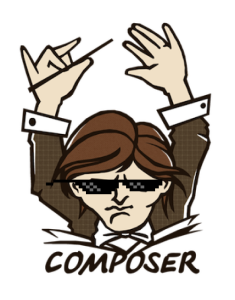Following on from jQuery Quiz Questions 21-30 here are questions 21-30. Hopefully you might learn something new about jQuery you didn’t know before. Once more if you find any mistakes please feel free to leave a comment with corrections. Enjoy!
Question 31
What does the event.stopPropagation() function do?
Answers
- Bubbles up the DOM tree and stops at the closest parent element.
- Bubbles up the DOM tree, preventing any parent handlers from being notified of the event.
- Bubbles up the DOM and prevents other handlers on the same element from running.
Correct Answers
Bubbles up the DOM tree, preventing any parent handlers from being notified of the event.
see answer in action: http://www.jquery4u.com/function-demos/stoppropagation/
API: http://api.jquery.com/event.stopPropagation/
Question 32
What does the jQuery .clone() function do by default?
Answers
- Create a deep copy of the set of matched elements excluding any attached events.
- Create a shallow copy of the set of matched elements excluding any attached events.
- Create a deep copy of the set of matched elements including any attached events.
- Create a shallow copy of the set of matched elements including any attached events.
Correct Answers
Create a deep copy of the set of matched elements excluding any attached events.
API: http://api.jquery.com/clone/
Question 33
The jQuery .queue() function can be used to?
Answers
- Queue up animation functions so they can run synchronously.
- Queue up animation functions so they can run asynchronously.
- There is no difference between .queue() and .animate() callback function.
- jQuery has no such function.
Correct Answers
Queue up animation functions so they can run asynchronously.
API: http://api.jquery.com/queue/
This feature is similar to providing a callback function with an animation method, but does not require the callback to be given at the time the animation is performed.
Question 34
What does this code snippet do?
$(function() {
//jQuery code
});
Answers
- Runs the jQuery code when the DOM is ready.
- Encapsulates the jQuery code protecting it from other code.
- It essentially does the same thing as $(window).load() function.
- All of the above.
Correct Answers
All of the above.
more info on answer: http://www.jquery4u.com/dom-modification/types-document-ready/
API: http://api.jquery.com/ready/
Question 35
Stats show that jQuery is used by roughly how many websites as at March 2013?
Answers
- 45 million
- 29 million
- 19 million
- 12 million
Correct Answers
19 million
source: http://trends.builtwith.com/javascript/jQuery
Question 36
Stats show that jQuery is used by roughly how many websites as at March 2014?
Answers
- 45 million
- 29 million
- 19 million
- 12 million
Correct Answers
45 million
source: http://trends.builtwith.com/javascript/jQuery
Question 37
Which statement is true about the jQuery Library final size?
Answers
- The final 2.0.0 file is 9 percent smaller than the 1.9.1 file.
- The final 2.0.0 file is 12 percent smaller than the 1.9.1 file.
- The final 2.0.0 file is 18 percent smaller than the 1.9.1 file.
- The final 2.0.0 file is 24 percent smaller than the 1.9.1 file.
Correct Answers
The final 2.0.0 file is 12 percent smaller than the 1.9.1 file.
source: http://blog.jquery.com/2013/04/18/jquery-2-0-released/
Question 38
What is a true about vanilla jsfiddle.net online coding tool?
Answers
- jsfiddle supports Firebug.
- jsfiddle supports Chrome Dev tools.
- jsfiddle supports both Firebug and Chrome Dev tools.
- jsfiddle supports Firebug Lite only.
Correct Answers
jsfiddle supports Firebug Lite only.
source: http://www.jquery4u.com/tools/firebug-jsfiddle/
Question 39
When was the initial release of the jQuery Library?
Answers
- June 2006.
- July 2006.
- August 2006.
- September 2006.
Correct Answers
August 2006.
source: http://en.wikipedia.org/wiki/JQuery
Question 40
Which statement is FALSE about the .closest(), .parent() and .parents() functions.
Answers
- .closet() starts searching from the current element.
- .parents() starts searching from the parent element.
- .parent() is the same as .parents() but returns one element.
- .parent() ends it’s search when it hits the first parent element.
Correct Answers
.parent() is the same as .parents() but returns one element.
The .parents() and.parent() methods are similar, except that the latter only travels a single level up the DOM tree.
API: http://api.jquery.com/parent/ http://api.jquery.com/parents/ http://api.jquery.com/closest/
Frequently Asked Questions (FAQs) about jQuery Quiz
What is the purpose of the jQuery quiz?
The jQuery quiz is designed to test your knowledge and understanding of jQuery, a fast, small, and feature-rich JavaScript library. It covers various aspects of jQuery, including its syntax, methods, effects, and more. The quiz is a great way to assess your skills and identify areas where you may need to improve. It’s also a fun and engaging way to learn and reinforce your jQuery knowledge.
How can I prepare for the jQuery quiz?
To prepare for the jQuery quiz, you should first have a basic understanding of JavaScript. From there, you can delve into learning jQuery through various resources such as online tutorials, books, and practice exercises. It’s also beneficial to work on real projects that use jQuery to gain practical experience.
Are there any prerequisites for taking the jQuery quiz?
Yes, before taking the jQuery quiz, you should have a basic understanding of HTML, CSS, and JavaScript as jQuery is built on these technologies. Familiarity with Document Object Model (DOM) is also beneficial as jQuery is used to manipulate the DOM.
What topics does the jQuery quiz cover?
The jQuery quiz covers a wide range of topics including jQuery syntax, selectors, events, effects, AJAX, and more. It tests your understanding of how to use jQuery to simplify tasks such as HTML document traversal and manipulation, event handling, and animation.
How is the jQuery quiz structured?
The jQuery quiz consists of multiple-choice questions. Each question presents a code snippet or a scenario, and you are required to select the correct answer from the given options. This format helps to test your practical understanding of jQuery.
Can I retake the jQuery quiz?
Yes, you can retake the jQuery quiz as many times as you want. This allows you to gauge your progress and understanding of jQuery over time.
How can I improve my jQuery quiz scores?
To improve your jQuery quiz scores, it’s important to thoroughly understand the concepts and practice regularly. You can also review the questions you got wrong to understand your mistakes and learn from them.
What can I do if I don’t understand a question in the jQuery quiz?
If you don’t understand a question in the jQuery quiz, you can refer to jQuery documentation or online tutorials for clarification. You can also seek help from online communities or forums where experts can provide explanations and examples.
How can the jQuery quiz help me in my career?
The jQuery quiz can help you in your career by validating your jQuery skills. It can be a great addition to your resume and can increase your chances of landing a job in web development. It also helps you stay updated with the latest jQuery features and best practices.
Is jQuery still relevant in today’s web development landscape?
Yes, jQuery is still relevant in today’s web development landscape. Despite the emergence of new JavaScript libraries and frameworks, jQuery remains popular due to its simplicity, ease of use, and wide browser compatibility. It’s used in millions of websites worldwide and is an essential skill for any web developer.
Sam Deering has 15+ years of programming and website development experience. He was a website consultant at Console, ABC News, Flight Centre, Sapient Nitro, and the QLD Government and runs a tech blog with over 1 million views per month. Currently, Sam is the Founder of Crypto News, Australia.


